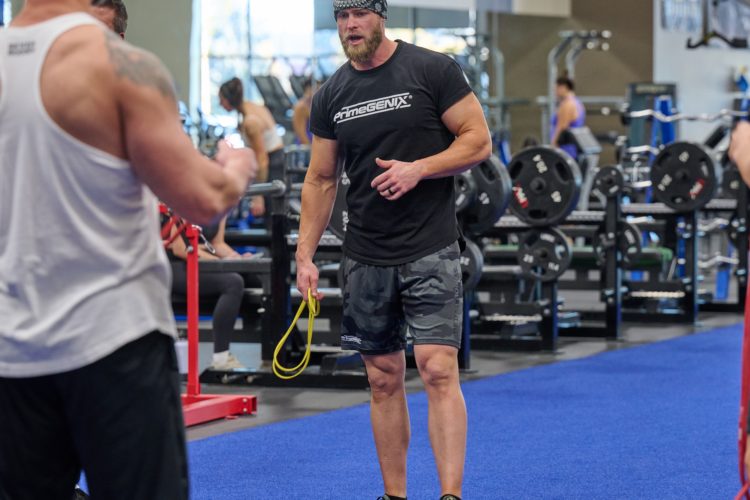Everything You Need to Know About Testosterone as You Age.
Testosterone is a topic in men’s wellness that garners a great deal of attention. And for good reason; it has a major impact on nearly every aspect of a man’s daily life. Testosterone affects everything from strength and muscle mass to motivation and sex drive.
In this comprehensive guide we’ll cover the following:
What is Testosterone?
Testosterone is the primary male sex hormone. It is mainly created in the testes via a signal from the brain. Most people are aware of its role in male reproduction, but it’s responsible for other things that make a man a man.
Body hair, a deep voice, and a larger, more muscular frame are all due to testosterone.
Males have relatively low testosterone until they reach puberty, where it skyrockets. It peaks around age 18 or 19, and slowly declines afterwards. At about age 40, testosterone levels decrease at a more rapid rate.
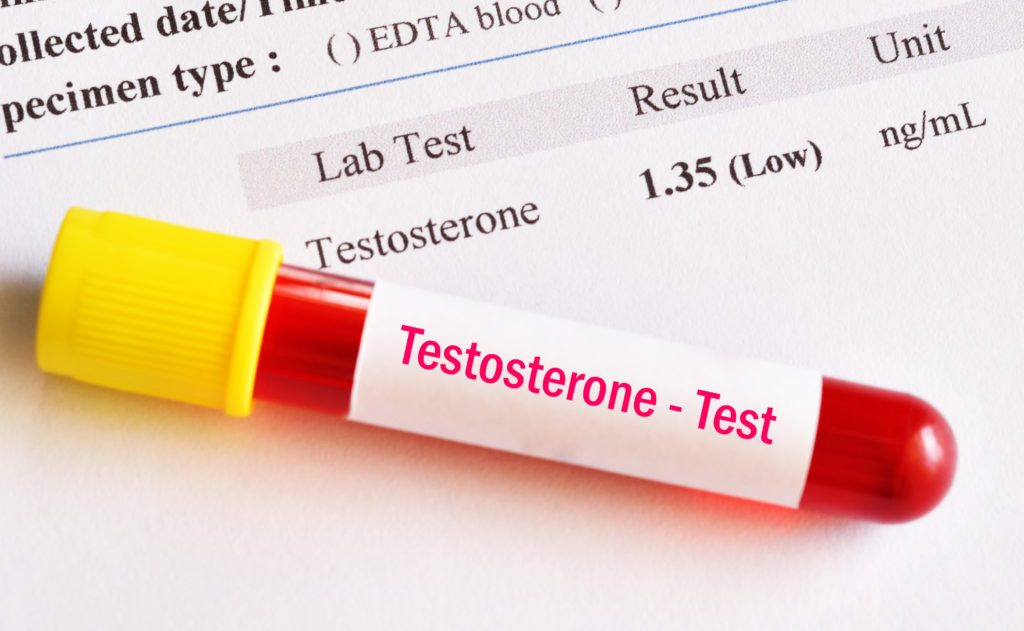
How is Testosterone Measured?
The tried-and-true method of measuring testosterone is through a blood test. It is one of the more common panels offered by doctors and clinics. If you go in for routine blood work, odds are you will find results showing testosterone levels.
Saliva tests have recently grown in popularity, due to its ease and less invasive nature. Saliva testosterone tests can be performed at home and mailed to a lab. In most cases, you can access your results online in a few weeks.
In general, blood tests are more accurate than saliva tests. When taking a saliva test, it’s important to note that they are better at measuring free testosterone than total testosterone.
Free Testosterone vs. Total Testosterone
It’s important to understand the different types of testosterone and their roles in the body.
Testosterone can be tightly bound to sex hormone binding globulin (SHBG). This represents the majority of testosterone in the body.
Testosterone can also be loosely bound to albumin. Unlike testosterone tightly bound to SHBG, this bond can break so testosterone can roam freely in the body.
The final type of testosterone is free testosterone. Free testosterone is not bound to any carrier. This is considered the most appealing form to some people, as it is free to bind to any receptor. Yet, free testosterone represents the smallest amount relative to other types. Free testosterone only represents about 2-5% of total testosterone.
Total testosterone encompasses all testosterone in the body. Free testosterone is only the number of unbound molecules.
What is a Healthy Testosterone Level?
Most medical professionals consider a healthy total testosterone range as 300-900ng/dl.
Anyone falling below the 300 ng/dl range is considered to have low testosterone. This is referred to as hypogonadism. Hypogonadism is associated with a myriad of problems, discussed in further detail below.
An individual can be in the lower end of the healthy range and still experience hypogonadal issues. Increasing total testosterone levels from say, 350ng/dl to 600ng/dl, can lead to noticeable improvements.
Signs You May Have Low Testosterone
While a blood test will confirm if you have low testosterone, there are several signs that may show it beforehand. Identifying these traits may push you to get tested if you were on the fence prior.
Many of these signs require some introspection, as they are based on “feeling.” Someone in tune with their body will be able to see the physical and mental changes associated with low testosterone.
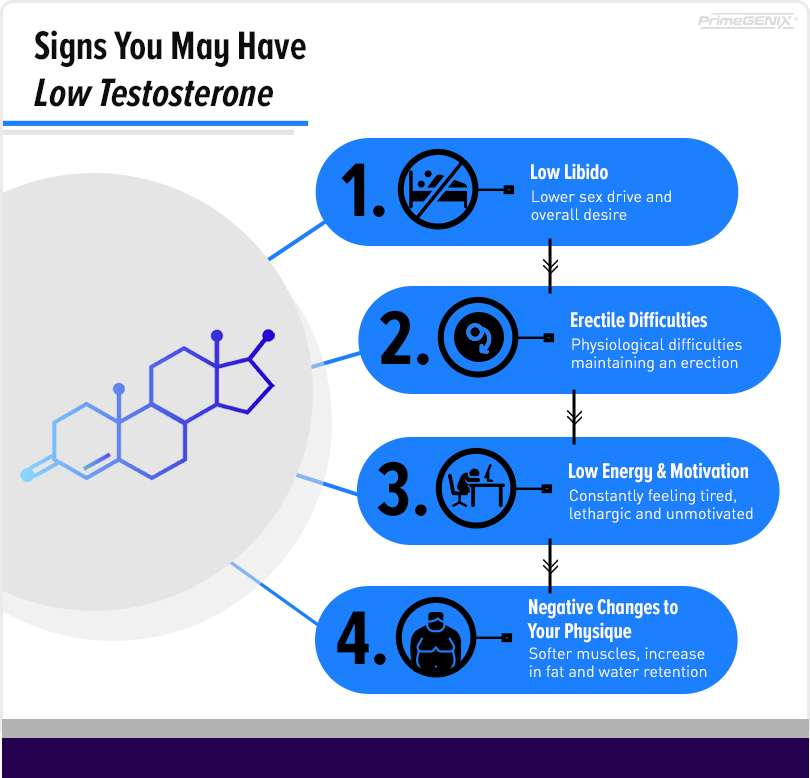
Low Libido
A decrease in libido, also known as sex drive, is often the first sign of low testosterone. Since testosterone is the male sex hormone, it’s evident why these two are related.
Erectile Difficulties
In the event that libido is not a limiting factor during sex, there are other indications. Erectile difficulties (i.e. maintaining an erection) can be a sign of low testosterone as well.
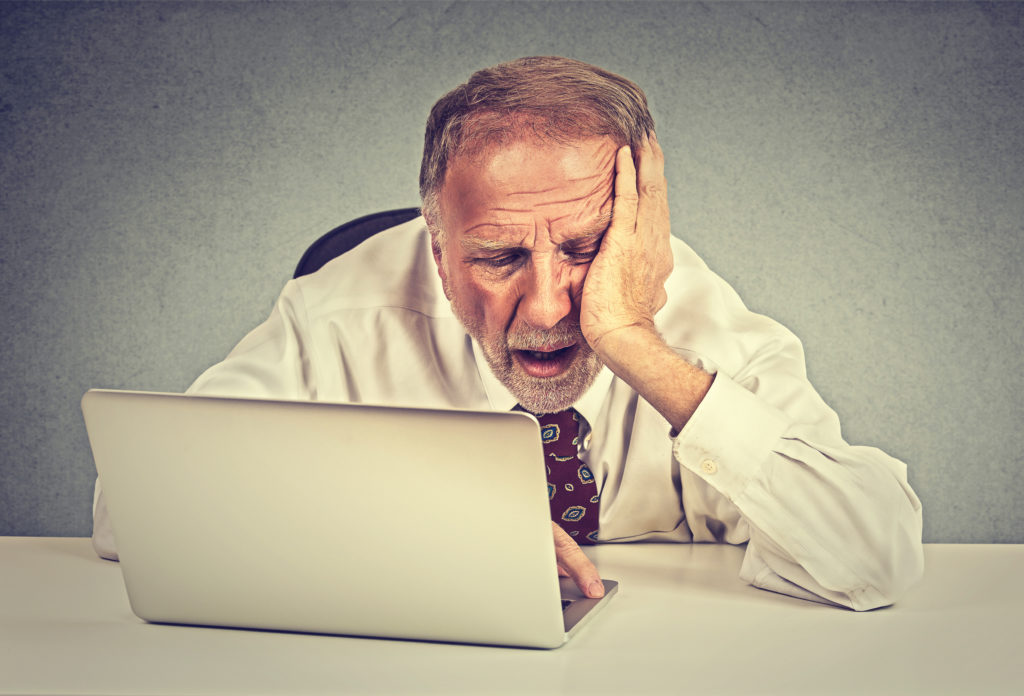
Low Energy and Motivation
A phrase popularized recently is that testosterone makes effort feel good. This is not limited to the gym (although working out feels better with high testosterone levels).
There is a link between testosterone and dopamine. Dopamine is a chemical in the brain that affects motivation. Low testosterone can impact dopamine, making you feel lethargic and unmotivated.
This translates to both physical and mental performance. It’s no coincidence that many high achievers are found to be in the higher percentage range for testosterone.
Negative Changes to Your Physique
Physique changes from low testosterone are often gradual. Over time they become more noticeable. This is one of the few tangible signs of low testosterone that you can see in the mirror.
You may notice your body start to look softer due to increases in fat and water retention. This can even be evident in people who exercise. In fact, people who work out are often more aware of the way their body looks, so they may be the first to know.
Dangers of Low Testosterone
Low testosterone can wreck a man’s day-to-day life. But the impact of low testosterone can be even more harmful than low energy and sex drive.
Hormones work in tandem. When there is a problem with one hormone it can have downstream effects that change others.
Disease Risk
Low testosterone is not just about feeling down and having a soft body. There are several diseases associated with low testosterone.
Untreated hypogonadism has been linked with increased all-cause mortality, heart disease, and stroke [1]. It is unclear if this is due to the low testosterone itself, or the impact low testosterone has on insulin resistance and obesity.
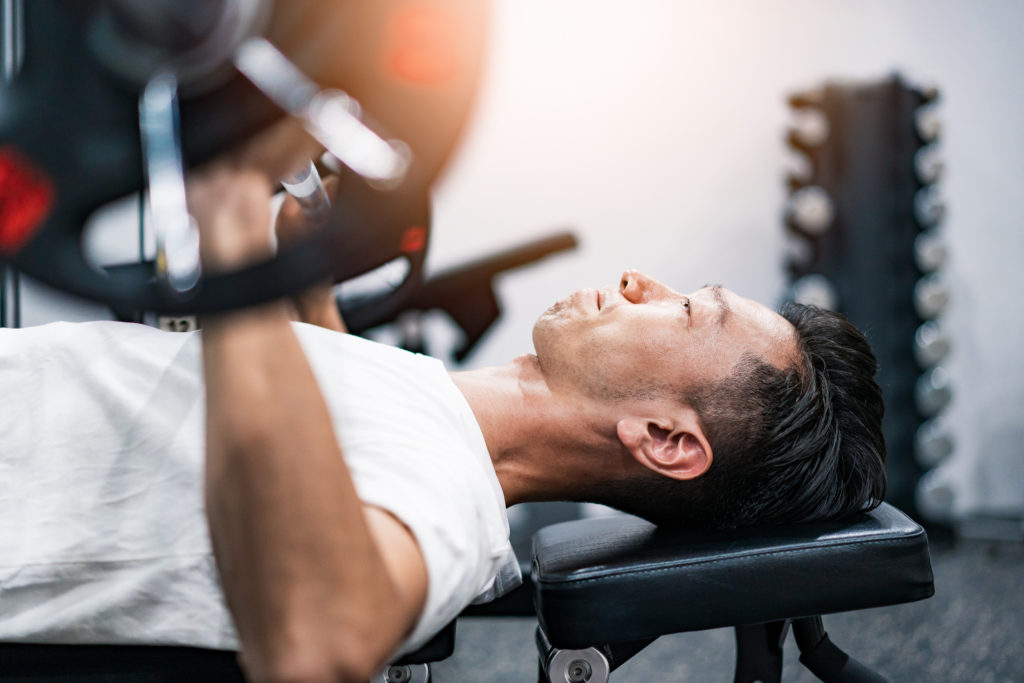
Loss of Muscle Mass
Muscle isn’t just an aesthetic feature that makes you look good. Muscle mass correlates with strength, so a loss of muscle also means a loss of strength.
Muscle strength plays a role in the prevention of injury. When elderly people fall, they often do not have the strength to brace themselves. They also lack the athleticism to regain balance to prevent a fall in the first place.
Maintaining muscle mass throughout your 50’s, 60’s, and beyond is crucial to avoid injury. Since testosterone impacts the amount of muscle you can build and maintain, it is important to keep it at optimal levels.
Injuries are an underrated factor when it comes to quality of life at an advanced age. One study showed that hip fractures in the elderly have a mortality rate between 12.7 and 29.2%. This was measured only one year after surgery [2].
A separate study in military veterans showed a one in three chance of dying within a year after a hip fracture [3]. This study is of particular relevance since the subjects were predominately men.
Low testosterone also can lead to a decrease in bone mineral density [1]. As a result, bones are less robust and more susceptible to breaks. The recovery process is even more daunting when this is the case.
What Causes Low Testosterone
The root of hypogonadism does not always boil down to one thing. There are several factors that could collectively cause low testosterone.
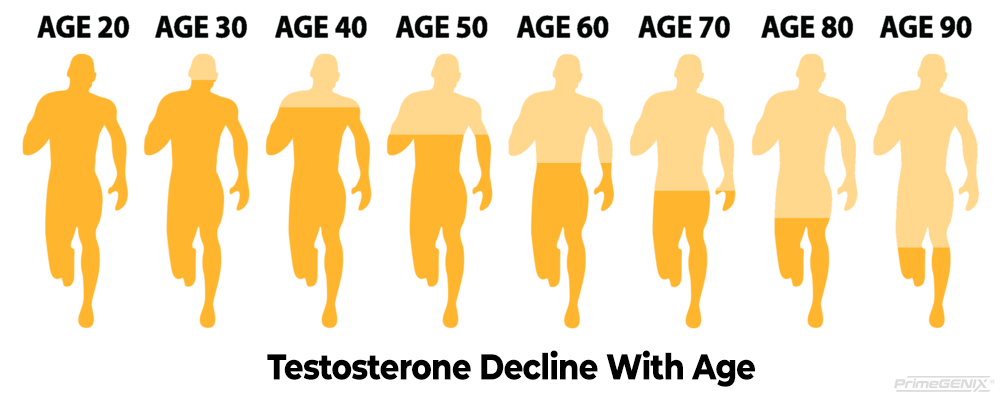
Age
In a way, a lowering of testosterone is inevitable. From the onset of age 40, men’s testosterone can decrease by 1% per year on average.
There are exceptions, since that figure is an average and not a definitive number. Some people may see a less gradual decrease as they age. The point is, it’s unlikely that your testosterone at age 40 and 50 will be at the level it was in your 20’s.
Obesity
There is an interesting relationship between obesity and low testosterone. Obesity leads to a reduction in testosterone. Low testosterone leaves you more prone to obesity.
This vicious cycle perpetuates itself and can spiral out of control.
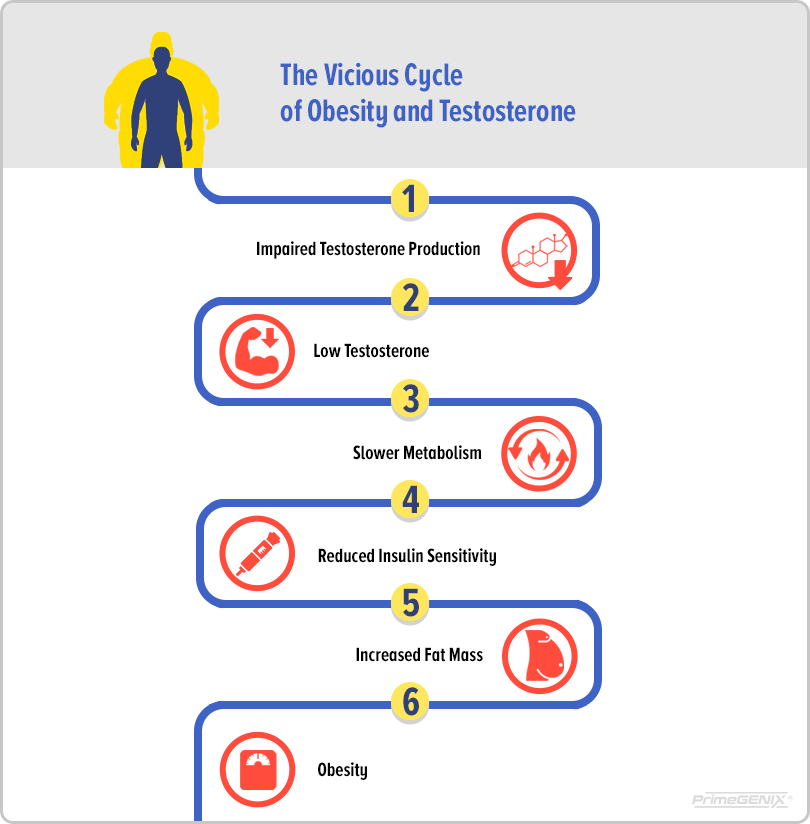
The reason obesity lowers testosterone is partially due to the fat tissue itself. Fat tissue, also known as adipose tissue, has a high prevalence of the aromatase enzyme. The aromatase enzyme is what converts testosterone to estrogen.
Fat around the stomach (visceral fat) can amplify the symptoms of low testosterone. This is because visceral fat tends to have a stronger inflammatory response. If you are not obese but tend to carry more fat around the mid-section, you may experience this.
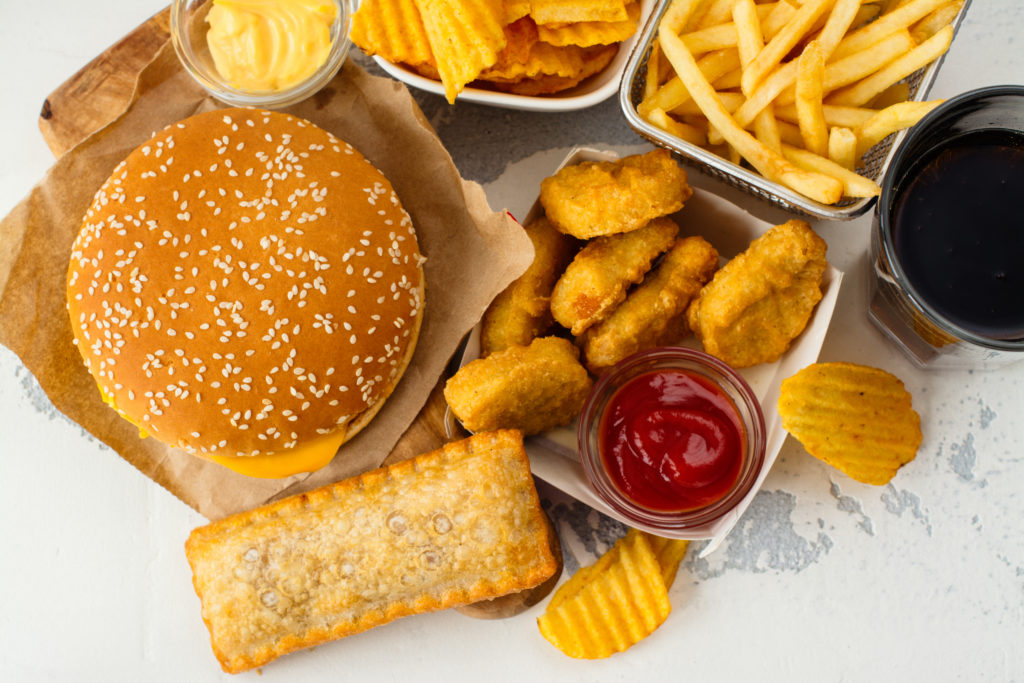
Poor Nutrition
Going hand in hand with obesity is a bad diet. Even people at a healthy bodyweight can have low testosterone due to poor nutrition.
Nutrients like zinc, magnesium, and vitamin D have been shown to support healthy testosterone levels. Being deficient in one or more of these nutrients and making the proper dietary changes can elevate testosterone.
However, this is not a linear effect. In other words, consuming tons of zinc or vitamin D will not raise testosterone past normal levels.
Injuries and Bodily Trauma
Earlier, we referenced the signaling pathway between the brain and the testes. While the specific science is not relevant for this discussion, it’s important to note the link between the two organs.
With that said, head injuries can affect testosterone production. Trauma to the groin area can also negatively affect testosterone production in both the short and long term.
Lifestyle Factors
Alcohol is associated with many negative health outcomes, testosterone being no exception.
Excessive alcohol consumption lowers testosterone on two levels, in both the brain and the testes. Alcohol impairs the function of both the Leydig and Seroli cells in the testes. These cells affect testosterone and sperm count respectively [4].
In the brain, alcohol affects luteinizing hormone (LH) and follicle-stimulating hormone (FSH), which control various aspects of reproduction [4].
The data on smokers is far less direct. There appears to be no strong link between cigarette smoking and testosterone. This despite the dangers of smoking in general.
Marijuana use has shown both an increase and a decrease in testosterone. The change depends on the study referenced. It seems to also depend on the individual using it.
Easy Ways to Boost Testosterone
Many people believe that their only option is to jump into pharmaceutical testosterone therapy. This may be viable in certain situations. But there are natural ways to boost testosterone levels as well.
Some of these changes will increase testosterone. Others will mitigate the reduction of testosterone.
These natural interventions can be implemented immediately, many of which cost nothing. Many of these lifestyle changes will go beyond boosting testosterone. They will also have a positive effect on health and wellness.

Maintain a Healthy Body Fat Level
Losing weight is the low hanging fruit when it comes to improving testosterone. Many people fall into the overweight or obese category when looking at body mass index (BMI). While BMI is not a perfect statistic, it is reliable when looking at the general population.
Losing weight is within a person’s control. Considerable weight loss can occur in as little as a couple weeks.
Weight loss has been shown to increase both free and total testosterone levels. However, there is a right and a wrong way to approach weight loss to boost testosterone.
Excessive exercise and having too low of body fat can decrease testosterone. Crash dieting or reaching competition level leanness can make the problem even worse. In fact, a study on a natural bodybuilder showed a 75% decrease in testosterone as he reached the end of contest prep [5]. The encouraging thing is that his testosterone increased after returning to his normal body fat level.
Weight loss should occur at a slow and steady rate, depending on the weight loss goal. On average, you should aim for a weekly reduction in body weight of 1-2%, with 2% reserved for obese individuals. Anything beyond 2% could result in a loss of muscle mass. This would defeat the purpose of the weight loss phase since the goal is to lose as much body fat as possible.
Remember that weight loss and fat loss are not one in the same. You could conceivably lose weight in the form of muscle and water instead of body fat. Men should aim for a body fat between 10-20% for optimal testosterone production.
During a weight loss phase, muscle mass can be retained with resistance training and adequate protein intake. The rule of thumb for protein intake for building and retaining muscle is one gram per pound of lean body mass. While some muscle loss is inevitable in a dieting phase, taking a balanced approach to your exercise and nutrition can mitigate it.
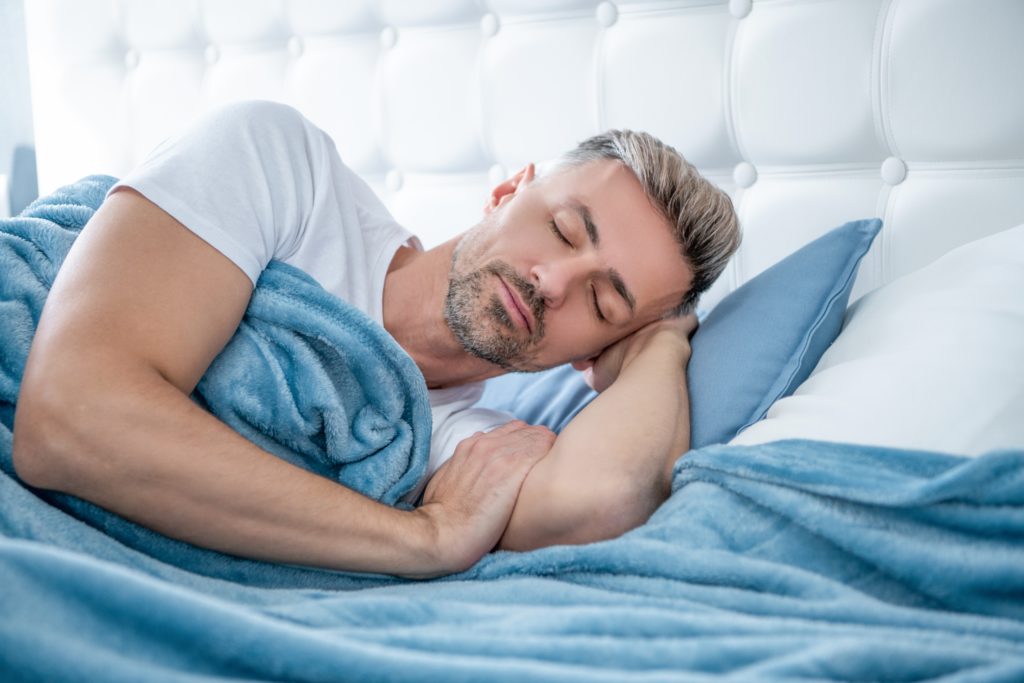
Get More, Better Quality, Sleep
Sleep has a profound impact on many important health outcomes, including testosterone. A study on young, healthy males found that testosterone levels decreased by 10-15% when they underwent a week of sleep restriction to 5 hours per night [6]. The reduction in testosterone was evident during the hours of 2pm-10pm, when compared to levels in a fully rested state.
Interestingly, 5 hours of sleep is the norm for some people. Sleep was not restricted to an obscenely low amount in the study. The researchers should be commended for the study design since they chose a reasonable amount of sleep deprivation.
Due to circumstances out of your control, like certain jobs, you may be unable to get sleep during the week. The good news is that a separate study looked at the effects of “sleeping in” on the weekends. It determined that testosterone levels increased after getting the extra rest [7].
While sleep length is the primary focus for most people, sleep quality should not be ignored. Routine is important when optimizing for better quality sleep. This includes going to bed and waking up at the same time, even on weekends (provided you’re not trying to make up for sleep deprivation during the week).
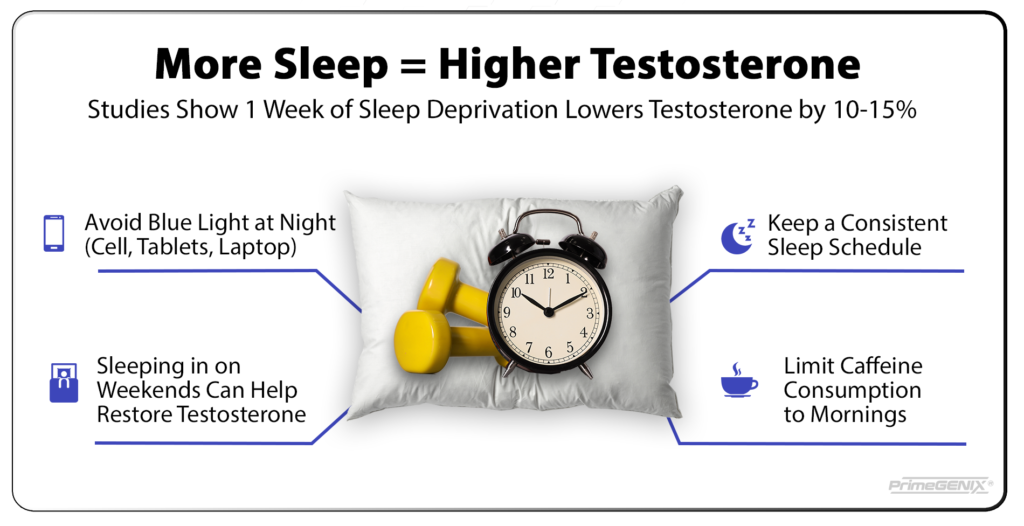
It’s advised to avoid bright light from phone and television screens as you wind down toward bedtime. This light, sometimes referred to as blue light, can disrupt circadian rhythms. This occurs by inhibiting melatonin production. In layman’s terms, it can make the body believe it is the middle of the day during night hours.
Avoid caffeine late in the day. Caffeine can remain in the body after its effects have diminished. Caffeine has a half-life of about 6 hours, meaning half of the caffeine is removed from the body in that time.
That means if you drink a coffee at 3pm, half of it is still in your system at 9pm, even though you no longer “feel it.” A 6 hour half-life is the average, some people metabolize caffeine slower or faster than that. If you are sensitive to caffeine you may want to limit it to morning consumption.
Don’t Be a Mouth Breather
Breathing through the nose rather than the mouth, especially when sleeping, can reduce cortisol levels.
Cortisol, also known as the stress hormone, has a negative impact on testosterone. Cortisol serves an important function, especially early in the day upon waking. But, chronically elevated cortisol can lead to a host of health problems.
Nasal breathing increases the amount of oxygen entering the body. It also increases the amount of carbon dioxide leaving the body. Combined with adequate sleep, this can give a boost to testosterone and energy.

Limit Alcohol Consumption
Alcohol impairs testosterone levels in multiple ways. One is the reduction in testosterone production itself. Second is the breakdown and removal of existing testosterone from the blood. Third is an increase in the aromatase enzyme, which converts testosterone to estrogen.
As a result, not only will alcohol lower testosterone production, but it will also increase estrogen levels. While estrogen is an important hormone, even for men, elevated levels can cause side effects like low energy and gynecomastia.
Studies show that testosterone reduction occurs acutely (immediately after consuming alcohol) and chronically (consuming alcohol over a longer period).
This research is not meant to scare anyone. Nor is it to convince people to abstain from alcohol forever. For better or worse, alcohol is a part of most society and cultures. But it shows a link between alcohol consumption and testosterone levels. A change would be beneficial for people who drink excessively and feel that it is the cause of a hormonal issue.
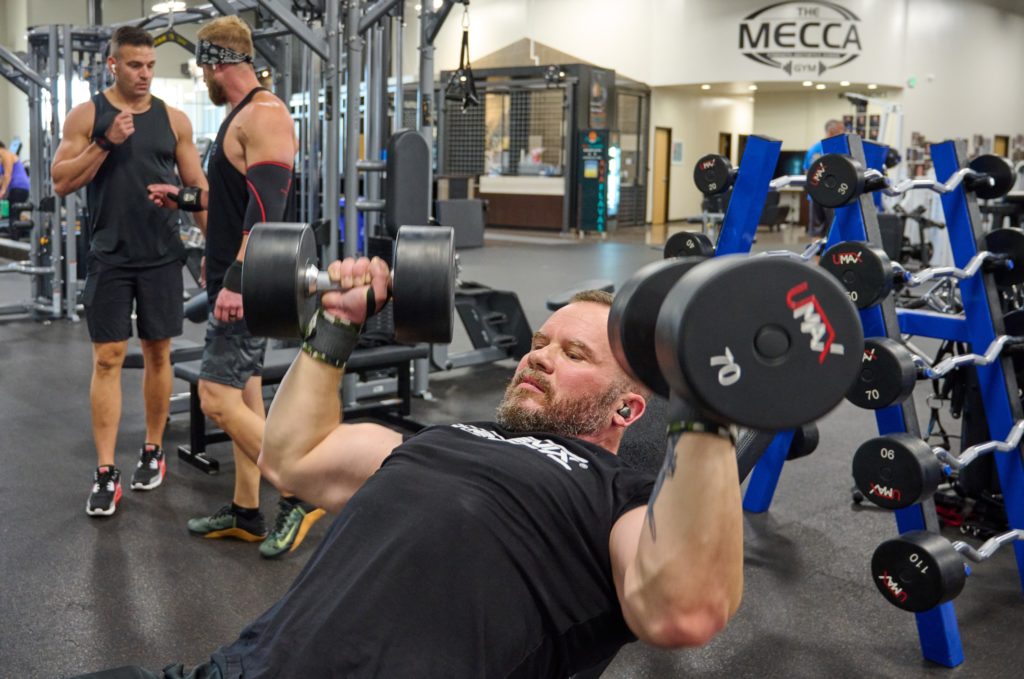
Lift Weights
There is nothing wrong with aerobic, or cardiovascular exercise. It has many different health benefits. But for the purpose of raising testosterone, we are referring to resistance exercise. Resistance exercise includes lifting weights, using machines, cables, and other equipment found in a gym.
The old adage was that performing powerlifting exercises, in particular the squat and deadlift, would increase testosterone. While those are great movements, it is more about the intensity of exercise rather than exercise selection itself.
If you are lifting weights with enough resistance, it will have a beneficial effect on testosterone. Not everybody can squat, deadlift and bench press for a variety of reasons. But alternatives like the leg press, Romanian deadlift, and other compound movements work just as well.
Resistance exercise has an immediate effect on testosterone, causing an elevation post workout [8].
Lifting weights also has a positive effect on growth hormone and IGF-1, which support muscle growth and well-being.
There are limitations to the human body, however. Overtraining, defined as consistent lowered performance over time, can decrease testosterone levels.
Many people, especially in fitness circles, fall into the trap of believing that if some is good, more is better. But overtraining will reduce testosterone levels. This completely defeats the purpose of training with the intent to raise them.
Each person will have a unique tolerance to training. This is based on experience, age, genetics, and other factors. As a result, overtraining isn’t based on a specific number of exercises or training sessions. Two individuals could perform the same workout routine and recover at different rates.
Rather, it is about symptoms. Overtraining results in reduced workout intensity, low energy, excessive soreness, and trouble sleeping. Since these variables are difficult to quantify, it’s important to have heightened awareness of how your body is feeling.
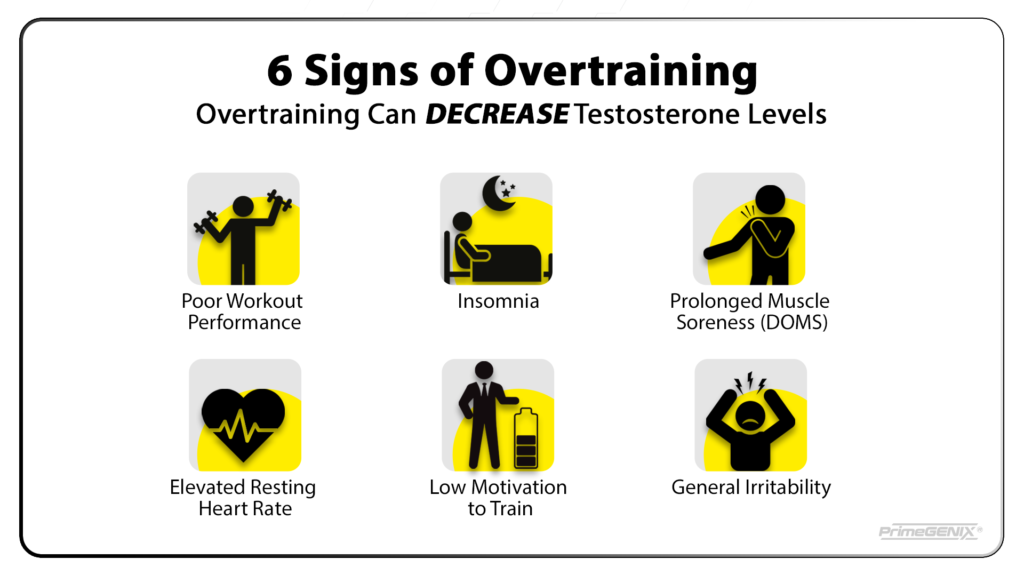
Avoid Illness
Have you ever noticed a decrease in libido when you’re sick? The occasional sickness is inevitable. But taking measures to avoid illness can help sustain testosterone levels.
IL-6 is a pro inflammatory cytokine released during illness. It has a negative impact on both testosterone and estrogen. This is due to an effect it has on the receptors that free testosterone binds to.
Maintaining proper hygiene, exercising, following a healthy diet, and getting adequate sleep will aid in illness prevention. It’s no coincidence that some of these same habits also support testosterone production.
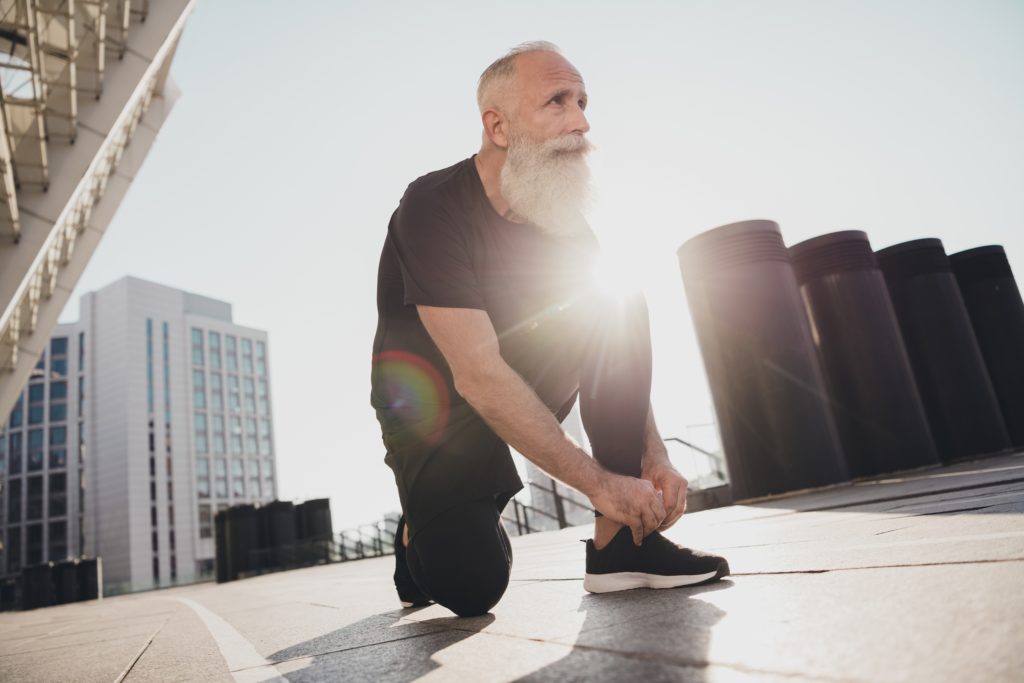
Get in the Sun
In health, certain protocols gain popularity out of nowhere, despite being simple and obvious. It is as if it took tangible science for people to take these practices more seriously.
One such practice is exposure to sunlight. Sunlight exposure leads to an increase in dopamine. This sets off a cascade of events that results in an elevation of testosterone. As mentioned earlier, dopamine and testosterone are closely related.
Get sunlight with the eyes (not looking directly into the sun), as soon as possible upon waking. This will have a beneficial effect on circadian rhythms and lead to better sleep. At night, you should avoid light from television, cell phones, and computer screens.
Sunlight exposure to the skin can increase vitamin D, a vital nutrient for the production of testosterone. Due to longer days and shorter nights, testosterone levels tend to be higher in the summer months.
On overcast days you should still try to get outside in the morning. It will take longer to reach the threshold of sunlight needed for its health benefits. While it may not seem like it, the light on an overcast morning is more powerful than an artificial indoor light.
The Relationship Between Testosterone and Other Hormones
The human body is a system, especially when it comes to endocrinology. When you pull one lever, odds are it affects something completely different. The goal of the body is to keep everything in balance, sometimes referred to as homeostasis. Some hormonal relationships are clear, while others are harder to predict.
Estrogen
Testosterone can convert to estrogen in the body. This conversion happens because of an enzyme called aromatase.
Aromatase is especially present in fat tissue. This is part of the reason why it’s important to maintain a healthy body weight and body fat percentage.
Excess estrogen is not something men want. But it’s important to note that estrogen still serves several important functions. Estrogen helps support bone health and even sex drive.
Some men who believe estrogen is inherently bad take measures to completely wipe estrogen from their body. What follows is joint pain, low sex drive, and poor motivation.
A quality blood test will not only show free and total testosterone, but estrogen levels as well. If they are within the normal range, there is probably no reason to try and reduce them unless advised by a doctor.
Cortisol
Cortisol, often referred to as the stress hormone, has a unique relationship with testosterone.
In healthy individuals, cortisol is naturally high in the morning and low in the evenings. It is also partially responsible for the fight or flight response. This response, and the subsequent adrenaline rush, is needed in certain situations.
However, if cortisol is chronically high, it can decrease testosterone levels. Stressful conditions like a bad job or relationship cause chronically high cortisol.
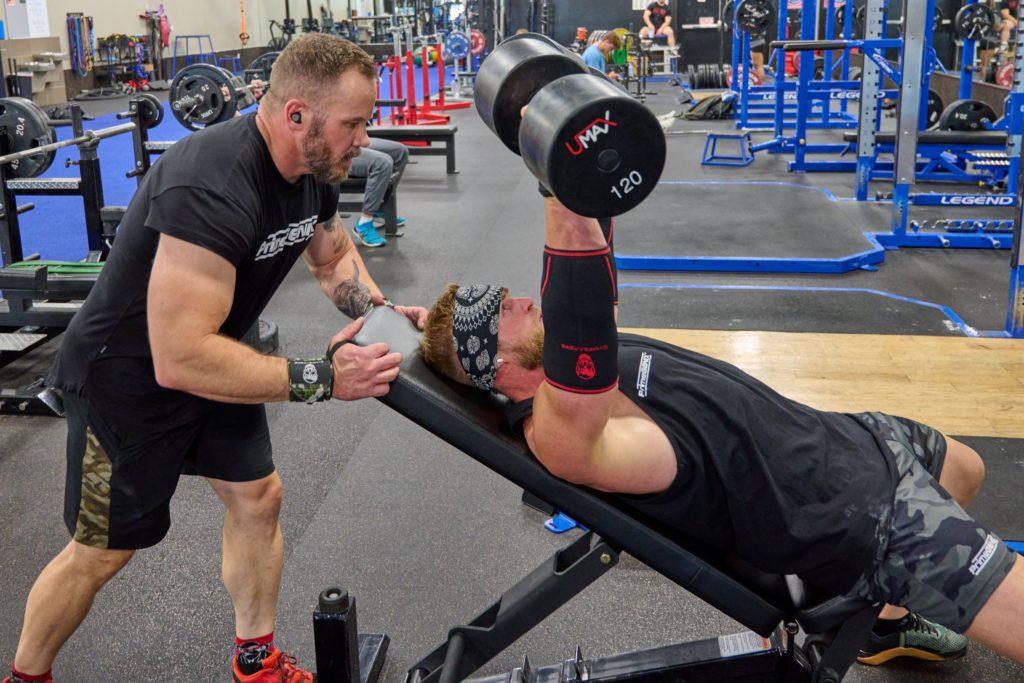
Natural Supplements to Raise Testosterone
There are alternatives to testosterone replacement therapy. Some individuals may choose to go with a less intense method to boost testosterone. The growing popularity of supplements offers a plethora of options for consumers.
When searching for a quality testosterone boosting supplement, it is important to look for specific ingredients. There are ingredients that increase testosterone that are backed by clinical studies.
Also, you need to make sure the ingredients are properly dosed. In most cases, an ingredient must reach a certain threshold to boost testosterone. On paper, a supplement can have the right ingredients but be ineffective due to the dosage being too low.
A common tactic in the supplement industry is the use of proprietary blends. A proprietary blend shows a list of ingredients on the label, but not the specific amount of each one.
A consumer may recognize ingredients in a proprietary blend, and believe it is a quality supplement. In reality, the ingredients may be completely underdosed and ineffective.
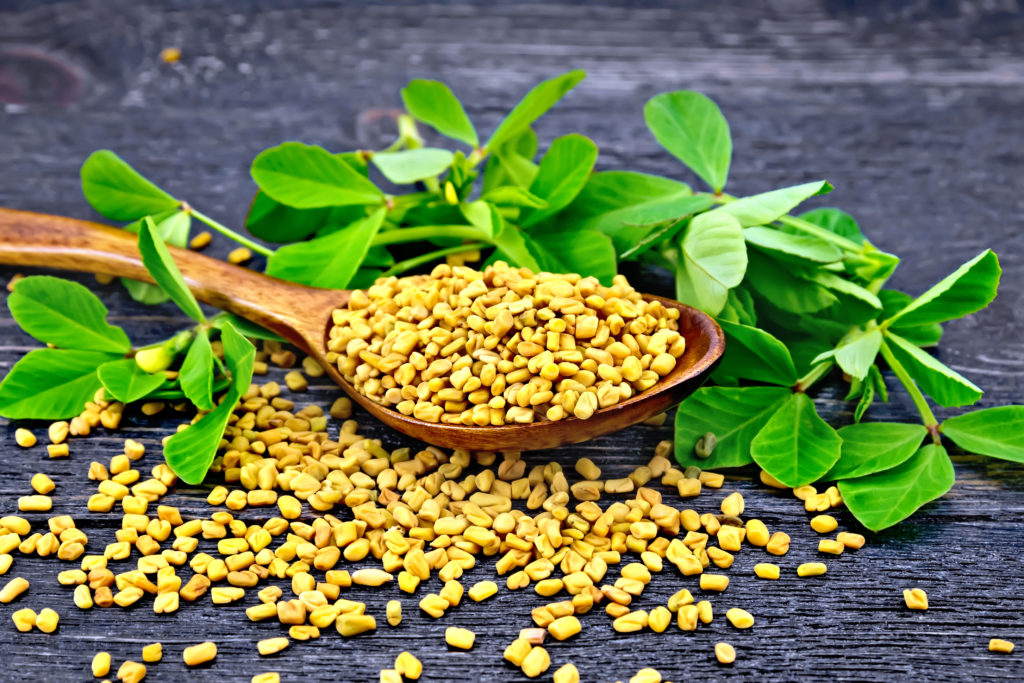
Fenugreek
Fenugreek is an example of a natural testosterone boosting ingredient supported by science. It is derived from a plant grown in various countries around the world. A study on men with hypogonadal symptoms between the ages of 35 and 65 showed an increase in free testosterone when supplementing with fenugreek for 12 weeks [9].
What’s more, the 50 participants in the study were resistance trained males. This means that resistance training could not be added to the study to conflate the results. This occurs in research because resistance training will increase testosterone on its own.
While it seems tedious, it’s important to look at the methods and design of studies when evaluating them. Simply looking at the abstract or conclusions doesn’t always work. These sections hide flaws in the study design and only highlight specific results.
DIM
As mentioned, many hormones work in tandem. Elevating testosterone means a greater proportion can convert to DHT or estrogen.
To keep free testosterone elevated, some people may choose to use an aromatase inhibitor. By inhibiting the aromatase enzyme, less testosterone converts to estrogen.
Diindoylmethane (DIM) is a compound found in cruciferous vegetables like broccoli. It acts as an aromatase inhibitor and can also change the potency of estrogen to a less potent form.
An advantage of using a natural estrogen blocker is that it keeps estrogen in balance. Stronger aromatase inhibitors can shut off estrogen production completely. While men want to keep estrogen in range, they don’t want to eliminate it altogether. Estrogen still supports bone health and libido.
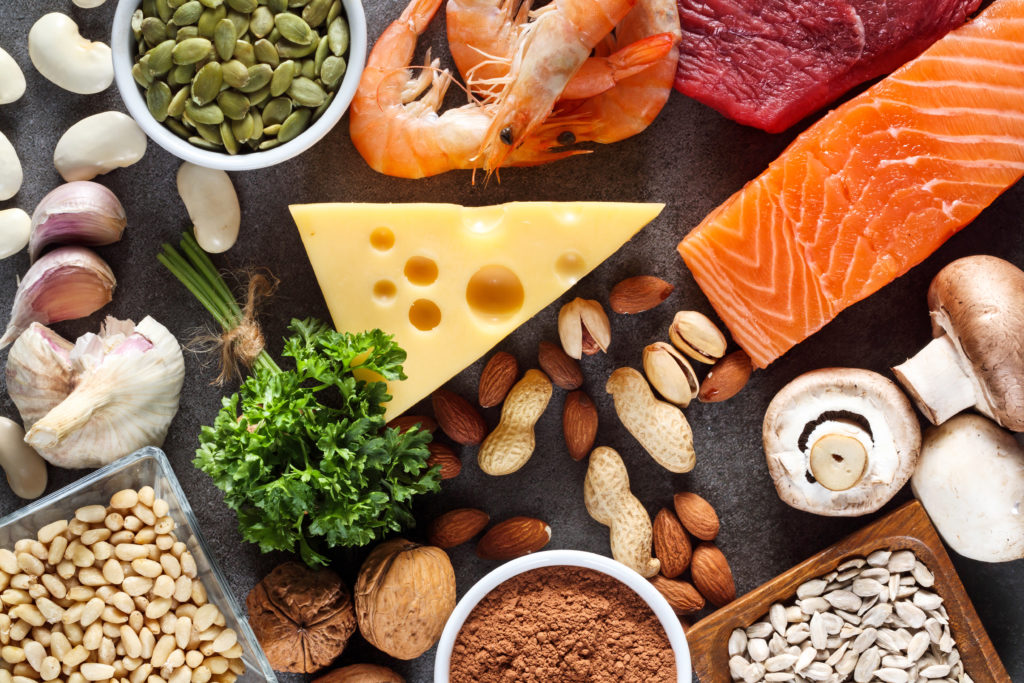
Zinc
Sometimes consumers become enamored with finding the latest and greatest supplement. In reality, the simplest ingredients have the best science behind them.
Minerals like zinc have evidence showing testosterone boosting effects. Earlier we mentioned zinc in the diet section. A study in the journal Nutrition showed that a zinc deficient diet lowered total testosterone [10].
But some people may have issues getting zinc in their daily nutrition.
Supplementation with zinc is an easy alternative. There are many forms of zinc, each with different absorption rates. Zinc citrate is the highest quality form, while zinc gluconate the lowest.
Vitamin D
Vitamin D is often used for immune health, but it has been shown to support testosterone levels as well.
A randomized controlled trial in healthy men with low testosterone showed an increase in testosterone levels when supplementing with a little over 3,000IU of vitamin D [11]. 3,000IU of vitamin D is considered an average dose. When shopping for vitamin D you will often find it in 1,000IU and 5,000IU capsules.
Vitamin D blood tests are relatively standard when going for routine bloodwork. So it should be easy to identify if you are deficient. Vitamin D is important for bone health and fighting off disease, so it’s an important nutrient to track.
Sun exposure can help optimize vitamin D levels. Many people choose to supplement vitamin D in the winter due to shorter daytime hours.

Boron
Boron is an overlooked nutrient for optimizing testosterone. It is a trace mineral found in foods like apples and fruit juices. But it doesn’t get the mainstream attention of micronutrients like magnesium and zinc.
Boron was shown to increase free testosterone and decrease estrogen in a study on healthy males [12]. Like fenugreek, it is one of the few ingredients that increase free testosterone rather than just total testosterone. The increases were significant but bear in mind this was a small study.
Boron also has positive effects on inflammation, bone health, and disease prevention.
Frequently Asked Questions
Is Testosterone Replacement Therapy (TRT) the Only Way to Fix Low Testosterone?
The need for TRT is often related to the severity of hypogonadism. There are instances in which testosterone replacement therapy is the best option. However, some individuals may want to try natural, lifestyle changing methods before going the TRT route.
Speaking with a reputable medical professional is the best course of action to determine if TRT is right for you.
Can You Have Too Much Testosterone?
The healthy total testosterone range for men is considered to be 300-900ng/dl. While there will be some outliers who go slightly beyond the range, this is the general standard.
A “natural” person will not have to worry about having too much testosterone.
There are some health concerns associated with testosterone replacement therapy. Polycythemia, prostate-related diseases, and a lowering of HDL (good) cholesterol are potential issues people should be aware of when considering TRT.
It’s also important to consider that many people are fine on TRT. The improvements dramatically improve their quality of life. But it’s smart to be aware of any potential health downsides when making that decision.
Can You Have Low Testosterone in Your 20’s and 30’s?
Statistically, you are more likely to experience hypogonadism in your 40’s, 50’s, and later years. Yet, there are exceptions. Some people in their 20’s and 30’s can have low testosterone due to genetics or lifestyle factors.
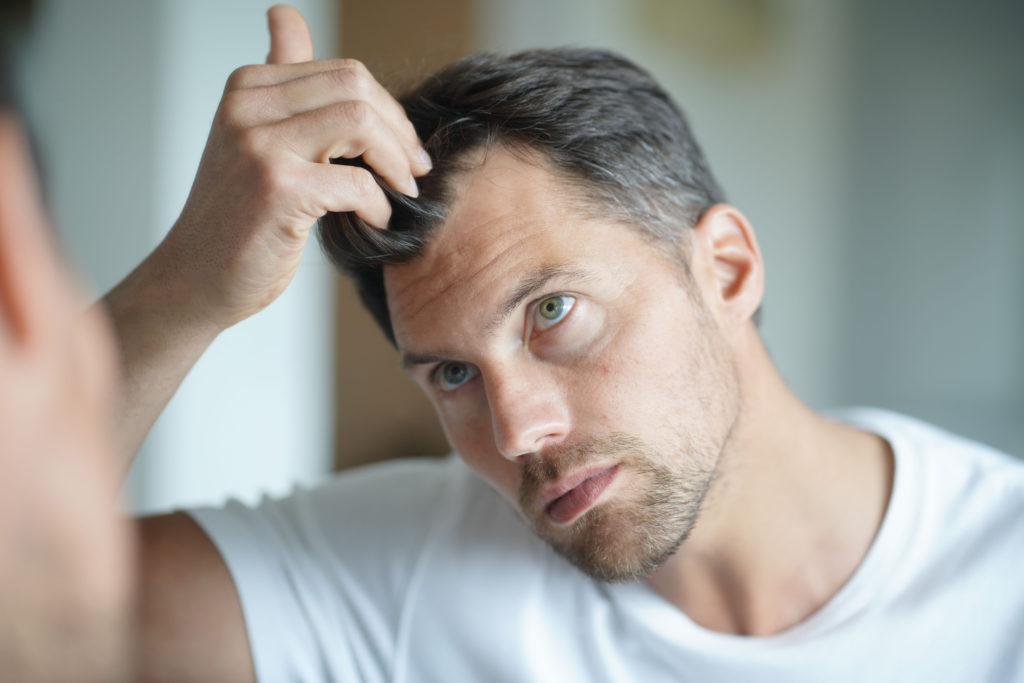
How Does Testosterone Affect Hair Loss?
Testosterone can convert to Dihydrotestosterone (DHT) in the body from an enzyme called 5-alpha reductase. DHT is relevant because it can act on hair follicles and lead to male pattern baldness.
This is heavily influenced by genetics. If you have a family history of male pattern baldness, then you are likely more susceptible to it.
Some people combat this by taking a 5-alpha reductase inhibitor like finasteride. By inhibiting 5-alpha reductase you would theoretically have less DHT. This means less chance of hair loss.
While there are many success stories utilizing this practice, it can lead to a slew of harsh side effects.
As mentioned, there is a downstream effect when messing with specific hormones. It is up to the individual to weigh the costs and benefits of using a 5-alpha reductase inhibitor.
Some people are willing to take the risk and try it, while others will accept that their hair loss is inevitable. Speaking with a physician to discuss your options is always recommended.
Do High Testosterone Levels Cause Aggression?
The term “roid rage” is often associated with high testosterone. Within the normal range of total testosterone (300-900ng/dl), it is unlikely that anyone would experience heightened aggression.
Only in the supraphysiological range (far above 900ng/dl) could that occur. Many suggest that roid rage only occurs in people with aggressive tendencies. In other words, if you are a naturally calm person, you would not suddenly experience increased aggression out of nowhere.
Does Testosterone Increase Energy?
Testosterone does not have the stimulatory effect that caffeine does. But people who increase testosterone typically experience an elevation in energy. This is particularly evident in people who are hypogonadal.
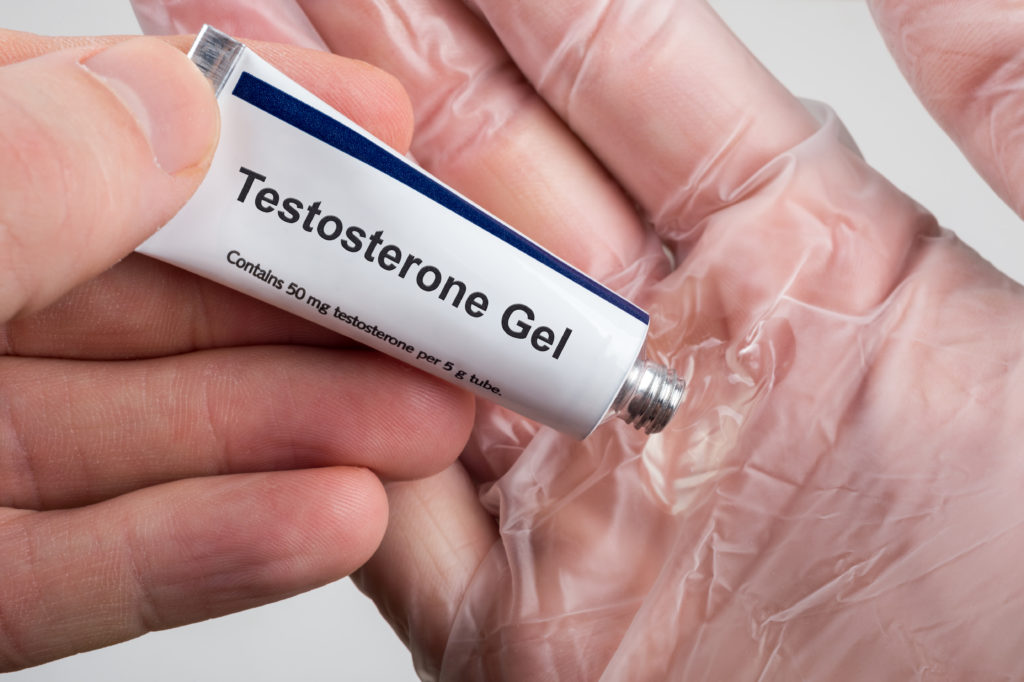
What is the difference between natural testosterone boosters, injectable testosterone and testosterone gel / cream?
Natural testosterone boosters can be found in supplement stores and online retailers. While supplements are not FDA approved, they still must follow FDA regulations. This is a common misconception about supplements; that it is an uncontrolled market. Perhaps that was once the case, but things have tightened in the past decade or so.
The ingredients found in natural testosterone boosters are usually from herbs or plants. These supplements can help increase testosterone levels.
Individuals with severe hypogonadism will likely have to choose a more powerful intervention.
As the name suggests, injectable testosterone is a form of testosterone injected directly into a person’s body. It is typically done on a weekly basis, but some people choose to inject every few days at smaller doses.
Injectable testosterone is more powerful than an over-the-counter supplement. It can restore a hypogonadal individual’s testosterone back to the normal range. Depending on the dose, it can exceed that range into supraphysiological levels.
A medical professional will be able to find the best dose for you and your situation.
Testosterone creams/gels are a topical form of testosterone rubbed onto the body. It is a relatively new therapy, discovered in 2000 [13].
The downside of testosterone gel is the potential for interpersonal transmission. Individuals using topical testosterone should take extra care near women or children. The gel can rub onto them, causing unwanted side effects.
References
- https://www.ncbi.nlm.nih.gov/pmc/articles/PMC4391003/
- https://pubmed.ncbi.nlm.nih.gov/35240759/
- https://pubmed.ncbi.nlm.nih.gov/32004175/
- https://www.ncbi.nlm.nih.gov/pmc/articles/PMC4816459/
- https://pubmed.ncbi.nlm.nih.gov/23412685/
- https://pubmed.ncbi.nlm.nih.gov/21632481/
- https://www.ncbi.nlm.nih.gov/pmc/articles/PMC4858168/
- https://pubmed.ncbi.nlm.nih.gov/20803956/
- https://www.ncbi.nlm.nih.gov/pmc/articles/PMC5278660/
- https://pubmed.ncbi.nlm.nih.gov/8875519/
- https://pubmed.ncbi.nlm.nih.gov/21154195/
- https://www.ncbi.nlm.nih.gov/pmc/articles/PMC4712861/
- https://www.ncbi.nlm.nih.gov/pmc/articles/PMC2785864/

